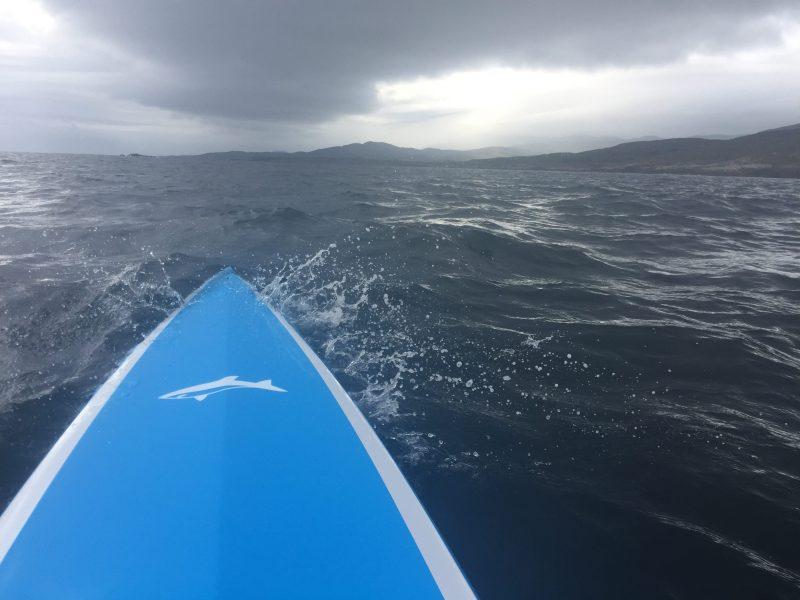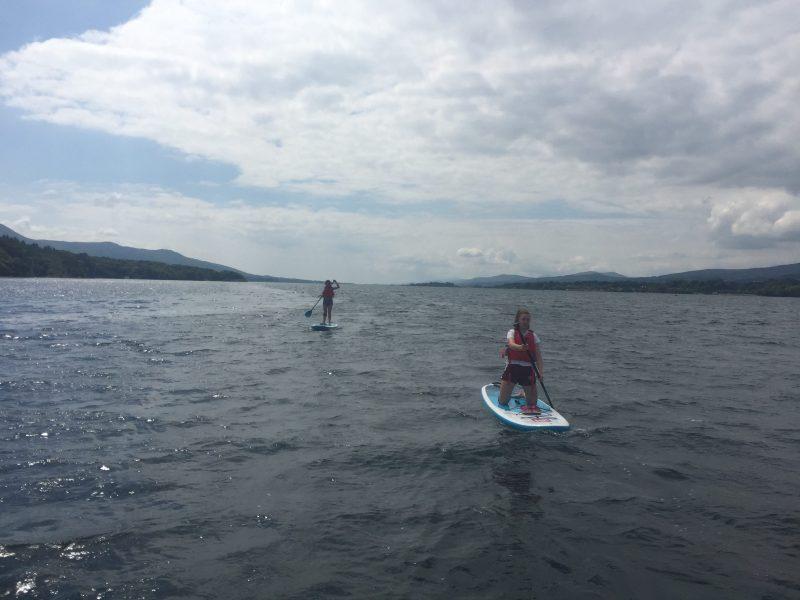Paddleboarding brings to mind photos of still glassy water, epic skies and tranquility – I’ve done enough to know this is true. But what happens on windy days? Once you’re proficient and want to up your paddling days its best to learn how to get on with paddling when it’s breezy.
On trying to find photos for this article it comes to my attention that on windy days I am less inclined to get my camera out – possible reasoning for the heavy weighting of lovely paddleboarding photos on instagram.
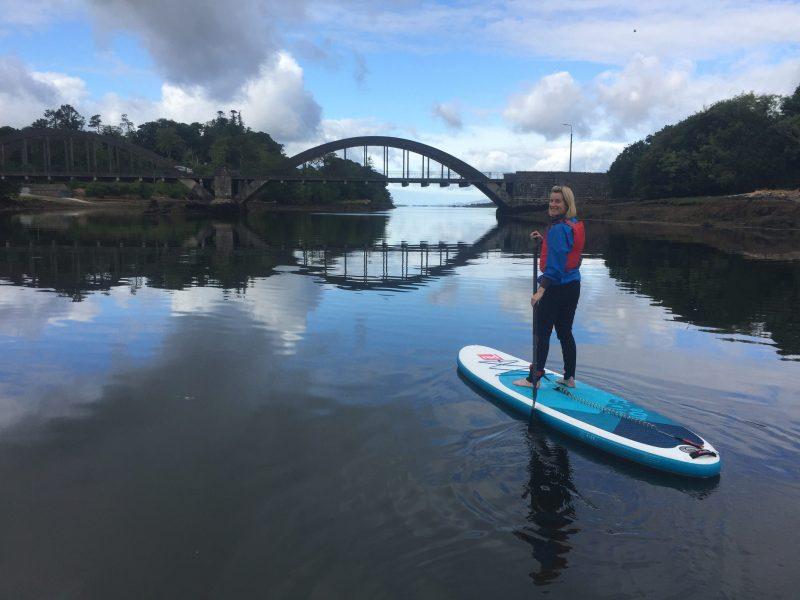
A windy day can provide days that are fun and rewarding, with the following tips I would encourage anyone to safely challenge yourself.
Planning
As with any time on the water, you should take someone with you, let others know where you’re going and how long you expect to be. When paddling in the wind there are a few extra steps to take in preparation for stellar times on the water.
Location
A place where there is wind would be ideal. Here in Kenmare (Ireland) we have a bay with almost guaranteed afternoon westerly winds. The other thing to look for are exit points, should anything go wrong you don’t want to be too far from land – an inlet is ideal but if you have a crosswind on a beach, that could also work. Above all be sure to understand local tides or other factors that could effect local water conditions.
Forecast
Learn about the wind – for that there are a number of forecasting apps that can help you but my favourites, yes plural, are called Windy, Windfinder and Dark Sky. Look at the weather history of where you’re going and be aware the weather can make a sudden change but forecasting apps are always getting better at predicting what’s going to happen.
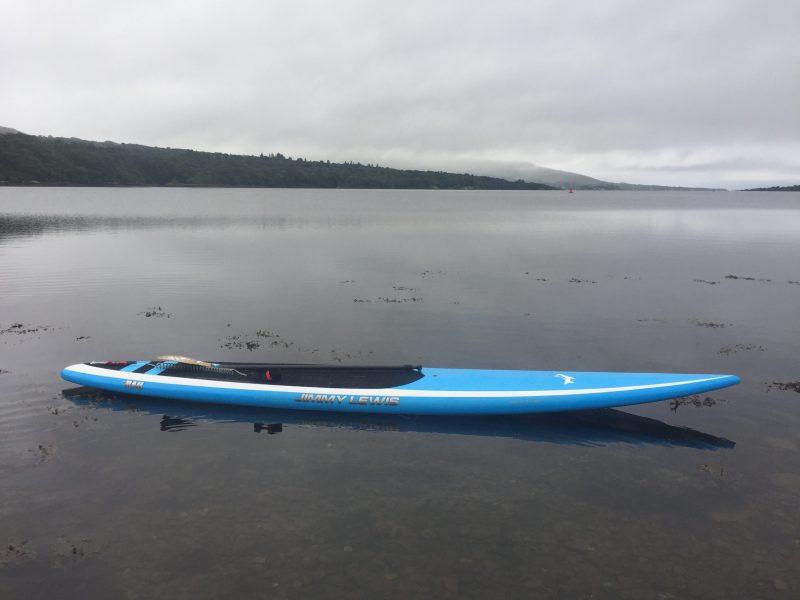
Equipment
Other than the obvious board (and leash), paddle and buoyancy aid, a few extras will be needed. Take a dry bag and some means of contact, such as a phone or VHF radio. Shoes help just in case you can’t make it back to where you started, and a jacket you can throw on will help should conditions change. Some water and maybe a snack or two are also worth adding to your list.
OK so I’m on the board and I’m in a wind that isn’t uncomfortable but what do I need to know?
Start Slow
Like anything it’s best to start slow and build up your skills, in this case, it means start in light winds and practice going upwind and then turning around and going downwind.
TOP TIP: If you start with upwind it will always be easier on the return journey.
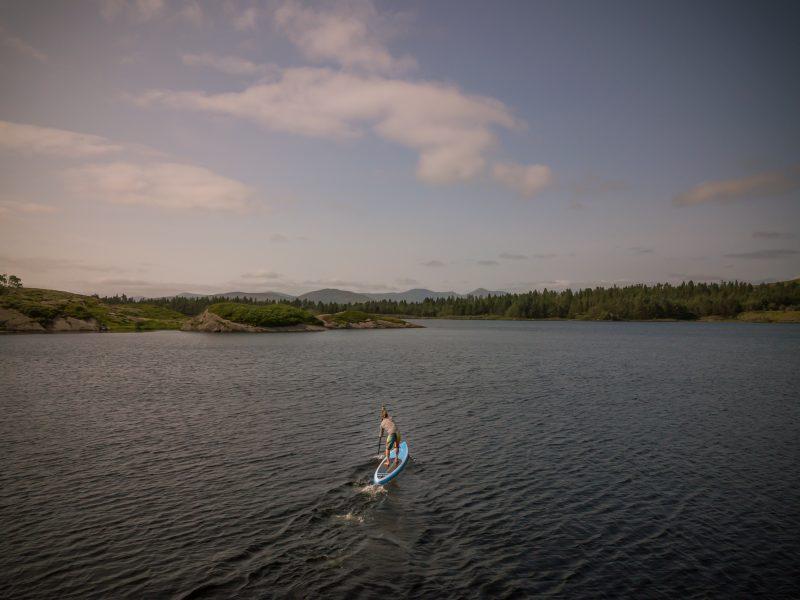
Photo – Skeye Productions
Effective forward paddle
Something to practise with no wind is an effective forward paddle, no matter how good you are this is something that can always be improved. Forward paddling is key for upwind paddling. In strong winds when you stop paddling you start going backward, so work on endurance. Being able to keep a slower but efficient cadence is better than short-lived powerful sprints. Here are some of the most common fixes for peoples paddling stroke:
- Make sure your blade exits the water at your feet.
- Imagine your paddle is stuck in treacle and you need to pull yourself past the paddle.
- Look where you want to go and set your shoulder blades back.
A good idea is to find someone better than yourself to paddle with, whether this is a friend or an instructor, it’s always helpful to have someone watch and critique your paddling.
Effects of the wind
The wind can be seen as a cruel and unforgiving force or alternatively an excellent training buddy.
- Your stroke will be more powerful
- You’ll learn to paddle in a straighter line
- Your balance will improve greatly
Paddling into the wind is like resistance training, meaning your muscles need to work harder to go forward. The wind likes to catch the rails of the paddleboard so you will learn to keep your board pointed in a straight line and maintain that. With wind normally comes some chop, this rough surface will force you to improve your balance and use your core muscles – practice will make perfect.
All this work you’re putting into your paddling is rewarded with the second half of your session. Downwinding. When you go with the chop, waves and the wind, you can effectively rest and just enjoy the experience of surfing. Just keep your legs bent and keep paddling and find the joy of those magic glides.
If upwind really isn’t your thing, set up a shuttle with friends and just go with the wind.
Standing vs kneeling
This is more a pro-con list, and it will depend on yourself and the day to what you find easier.
Standing
Pros – more powerful stroke and easier to move around on the board to adjust trim
Cons – Creates more wind resistance (your body is like a sail)
Kneeling
Pros – More Stable
Cons – Slightly less powerful stroke and harder on the knees if paddling for a long time
Personally, I prefer to stay standing until I absolutely stop moving forwards, but this is down to you as an individual and what you find most comfortable.
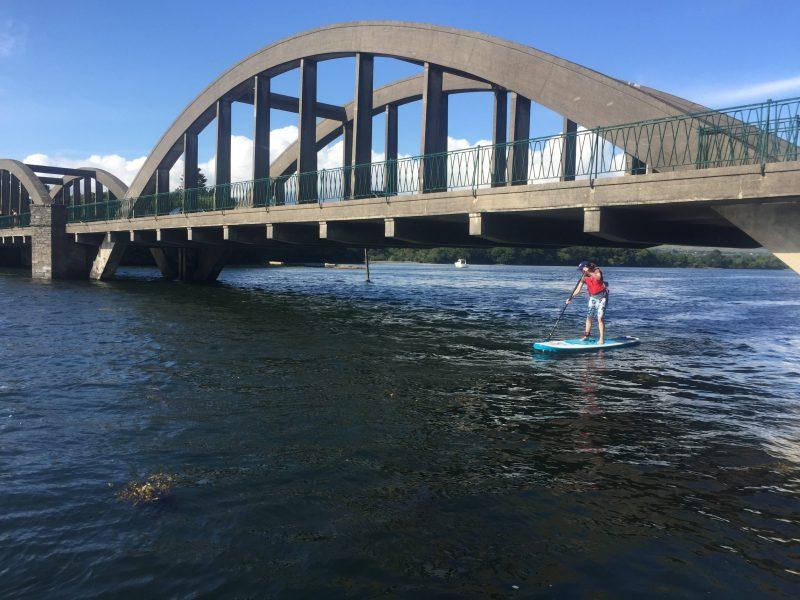
Understanding the terrain
Another reason for staying close to land, if you read it correctly, you can use the coastline or banks to your advantage. Look for tall hills and trees that can provide any useful shelter. You can use these to attain upwind or even just to have a quick break.
Have some fun and go with it
Ultimately, if you want to spend more time on the water you will have to paddle in the wind, but it doesn’t have to be a daunting task. Its a really fun challenge and your paddling will only improve. Take a friend, there’s nothing like sharing a glide with someone else.
Cover photo – Robert Ziegenfuss
